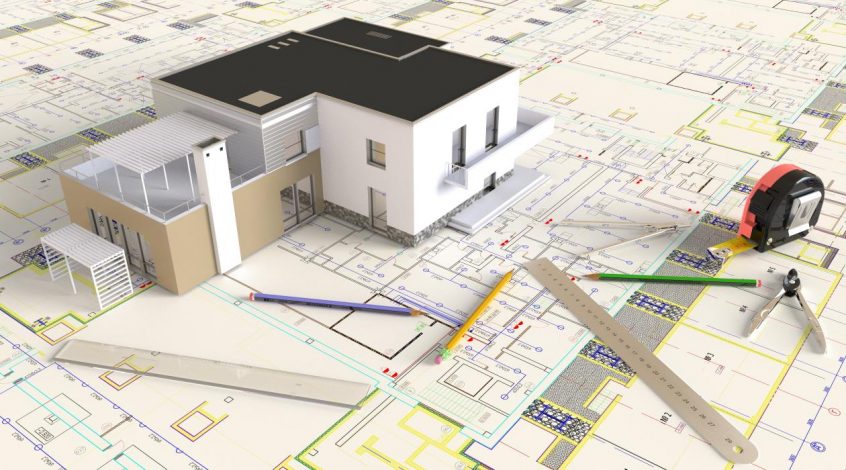Once, flat roofs were associated with leakage and questionable execution. Today, flat roofs have gained new prestige and are increasingly popular with investors. Proven resistant to weather, flat roofs are already considered as an alternative to sloped roofs. When properly designed, professionally constructed and regularly maintained, flat roofs can also be sustainable. But what exactly makes a flat roof a good roof and what should be taken into consideration in its implementation so that you may live a carefree life under your flat roof?
Drainage and protection against energy losses
Also from flat roofs, water must be allowed to drained. Therefore flat roofs, contrary to their name, are not really flat. They carry a gentle slope which enables excellent drainage and prevents the retention of water. In the past, the flat roof’s slope functionality was often implemented with concrete. However, demand for higher residential standards and, ultimately, the construction of buildings according to zero-energy standards, matters are changing radically. By 2020, we will have reached a most important turning point, as the construction of passive houses will become a nonavoidable rule.
Inclination concrete can no longer compete with the materials that are manufactured for the construction of passive houses. Too much energy is lost through the concrete layer. Also, to perform only one function – providing a drainage slope – the concrete is also too heavy and too thick. In practice, inclination concrete is already replaced with inclination panels. In addition to their high load-bearing capacity, inclination panels’s additional positive characteristics fully comply with the guidelines of nearly zero-energy standards. As inclination panels are made of a lightweight and durable thermally insulative material, they also allow for better drainage, as the slope of the incline can be increased freely, without adding weight to the load- bearing structure. This is impossible to achieve with inclination concrete.
An article on the advantages of inclination panels is already published here.
Durability of flat roofs
In construction of buildings, energy efficiency is by far not the only important point. Much emphasis is given to their sustainability, as well, and the same also applies to the roof.
What makes flat roofs sustainable?
Few investors are aware of the fact that the duration period of a flat roof, which should be the same as the duration period of the building, largely depends on the leakage preventing waterproofing.
Surely you have heard countless times that flat roofs tend to leak. Many a disappointed person may have even discouraged you from deciding on a flat roof due to their own bad firsthand experience.
Once, the sustainability of flat roofs was questionable mainly because the waterproofing layer was installed on exposed roof surface. Consequently, the waterproofing was constantly in touch with external factors – heat, frost, hail, and solar radiation. These effected that the waterproofing, through wear, eventually become more and more rigid and brittle. Consequently, under loads – such as walking – the waterproofing cracked.
Why should we repeat this? If we are considering to install or renew a flat roof, we should insist that it be carried out properly and thus become a sustainable flat roof. There is no need to burden future generations with problems due to a bad roof.
Especially as this can be quite easily achieved using the inverted flat roof system. In this case, the waterproofing layer is concealed under a robust and water non-absorbing layer of thermal insulation so as to prevent its premature deterioration.
Read here how to build a roof for a lifetime.
New additional space under the clouds
We should not ignore our rapidly changing lifestyle trends. In overcrowded cities, additional square meters of residential space under the sky are a great investment into a good way of life. Also, they increase the value of the building that you have decided to be your warm home. The space gained with inverted flat roofs can easily adjust to any new need and desire. A garden? A playground? A parking area?
See our collection of ideas on what you can create on your inverted flat roof. You can download the quick guide on the link below.

 +386 7 39 39 510
+386 7 39 39 510 advice@energyshield.biz
advice@energyshield.biz

